Spotlight > By Whistle Category > Round Whistle Articles > 009 C.S.LEET’S Bullet Model 601 Whistle
Whistory
In SPOTLIGHT number one we looked just a little at the Bridgeport Gun Implement Company ( i.e. BGI ) bullet whistle under American made production whistles prior to 1900. If you remember it was a production whistle, not a ‘trench’ whistle or handmade hobby whistle that a soldier or other person put together while sitting back in some hole or trench. It is a high-quality designed whistle, and we would like to focus on its designer and the subsequent production of it prior to 1900.
Research on the Model 601 bullet whistle
The 601 had attributes of a round whistle with one window, but with the characteristic of a diaphragm inside rather than a fipple at the mouthpiece, much like a general service tube shaped whistle ( GSW ).
C.D. Leet ( apparently the father of C.S. Leet ), laid the groundwork for these whistles by way of his business dealings in the Bridgeport Gun Implement Company formed on December 28, 1869.
Along with his other patents and witnessing signatures to various other company patents in Bridgeport, that came over the next 15 years or so, was one he had patented (along with Hotchkiss ) — a shell cartridge (patent #98,278 — dated that same year ) that was said to be improvements in the ‘boxer’ cartridge.
He had been making ammunition earlier ( 1862 ) as a small manufacturer. In 1878 came another improvement in a cartridge that C.S. Leet was a witness for, patent #208,247 dated Sept 24,1878.
Convergence at Bridgeport Gun Implements of the bullet whistle casing
C.S. Leet went on to patent the call whistle #250,083 – dated November 29, 1881 taking only 5 days from filing to issuance – just three years later, after the latest patented cartridge already mentioned. Here is the actual patent information.
This whistle came in several variations of the knop and even the window shape but remained the same overall. However, it is of note that a smaller model is described in a catalog. This whistle has not surfaced as of this writing.
Whistle Classification
| Category | Round |
| Order | Bridgeport Gun Implement Co. |
| Type | hunting |
| Class | nickel plated brass brass |
| Subclass | hand held suspended |
Whistle Archeology
The greatest verifications to be made in whistle collecting are the patent documents. They reveal most of the pertinent facts needed to clarify intent and people, as well as dating.
Patent details are presented via Google patent research.
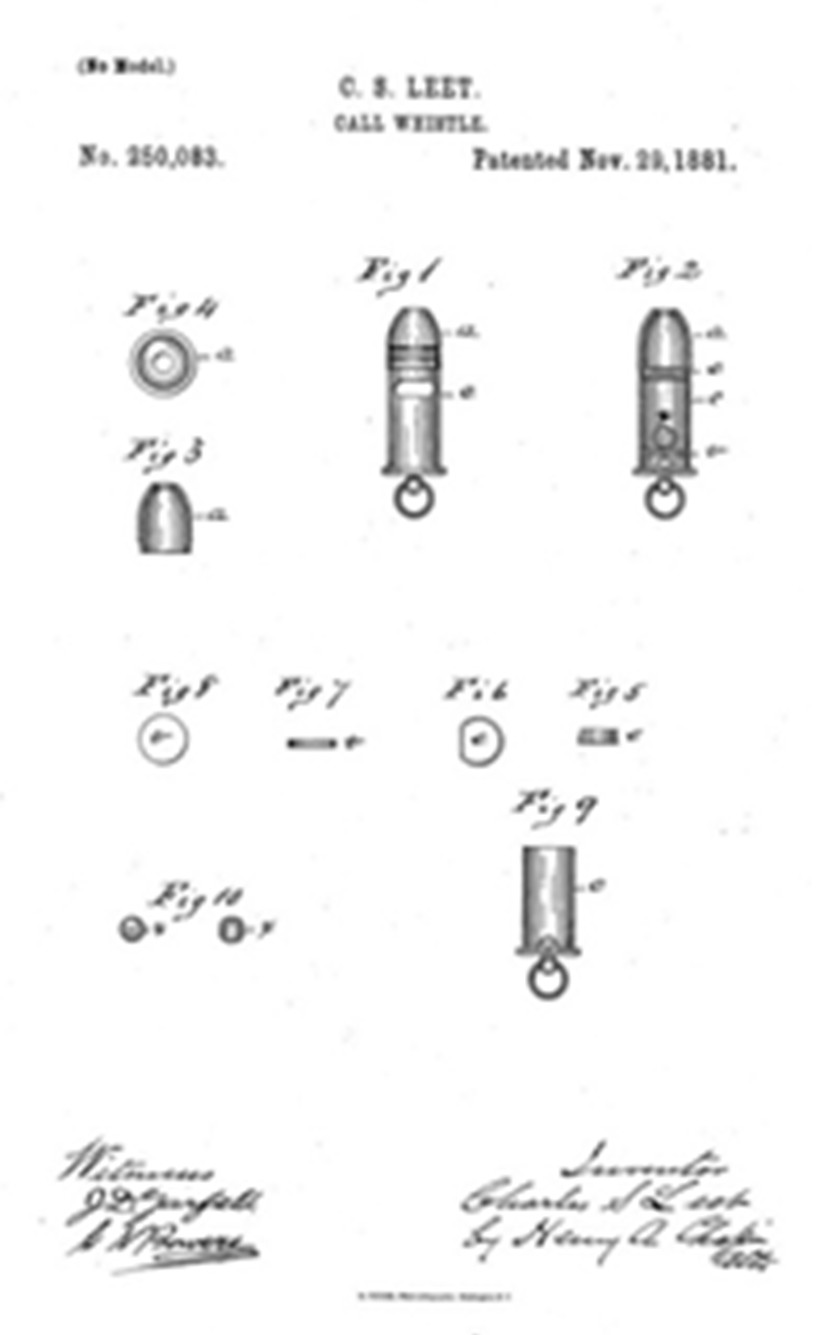
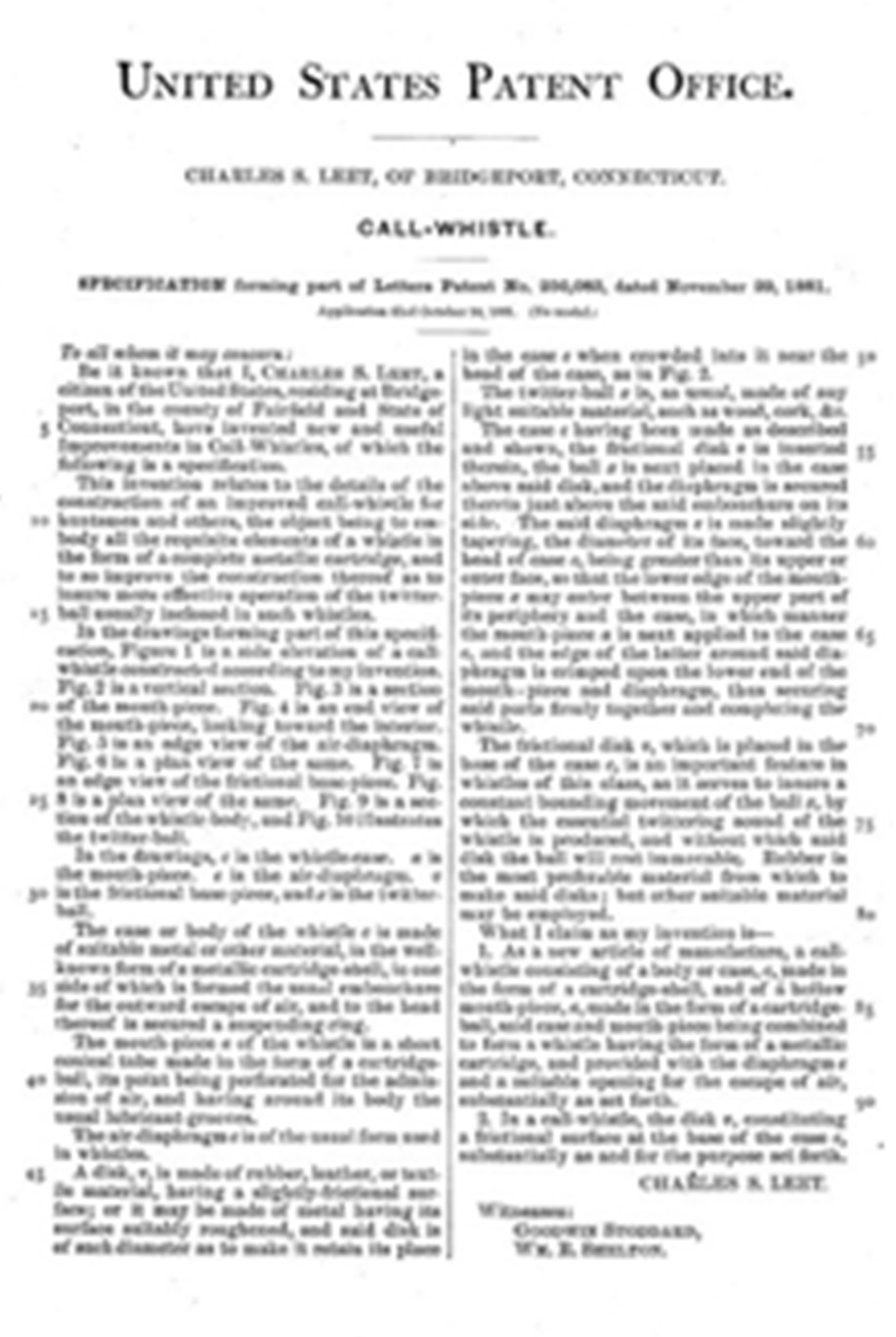
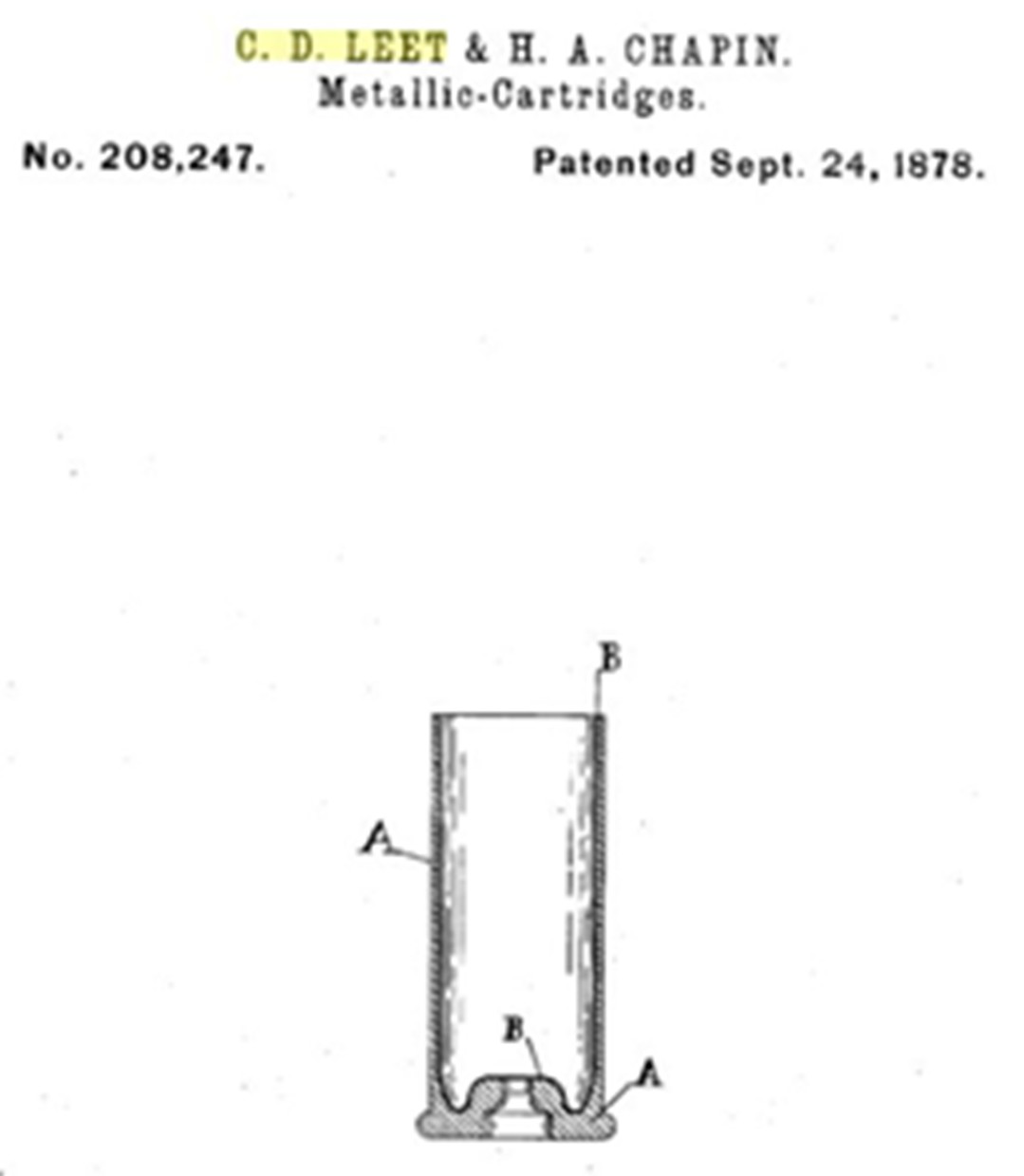
One can easily see the similarities in structure to the earlier casing in production. His design ( C.S. Leet ) was for huntsmen ( not police per se ) The casing is in the form of a metallic cartridge – shell and the mouthpiece is in the form of a ‘cartridge-ball’. It would go on to be manufactured in two sizes, a 50-caliber carbine cartridge and a 33-caliber pistol cartridge as seen in an 1883 Tryon catalog. It was offered gilt, and nickel finished. An example of the 33-caliber model has not surfaced yet.
How long this whistle was manufactured is not known, but it disappears about the turn of the century, making it scarce. It does surface from time to time though and is a very high-quality whistle, quite shrill.
As of this writing, (Feb. 10, 2013 ) there is one listed on eBay for almost 500 dollars. However, one sold this past summer on a BUY IT NOW for under 30 dollars.
Some were made with a ‘twitter’ ball ( wooden with a hole through them ) some were not. Some had a flat stone instead. We have examples in brass and copper materials. There are handheld only models but typically with a ring for a chain.
We might take a moment here to look at an early advertisement of the 601. The knop is a little more extended than usual and what really jumps out at you is the different window, half rounded. This whistle also, has not surfaced.

Whistology
Brass Bullet Whistle Handheld Model 601
Our first look is at a handheld model 601 entirely in brass. You may note that the top is not just a spherical shaped ball with a hole through it, but has a bit more design and design to it with the extended tip. It attaches to where the center pin would be. The example on the right, we replaced the missing ring.
Further, the patent date when stamped is always to the front above the window. You can compare this to the ‘rougher’ made ( note the window cut is off center ) copper version next to it, the bullet end being gilded.
Typically it has two holes in the knop that do not go all the way through. So, the ring must be an open ring pressured into the holes for retention. This made it easier to lose that ring and so when we found it, we had to replace it. The length is 1.8 inches or 46mm for the main body itself and it weighs in at 14 grams.
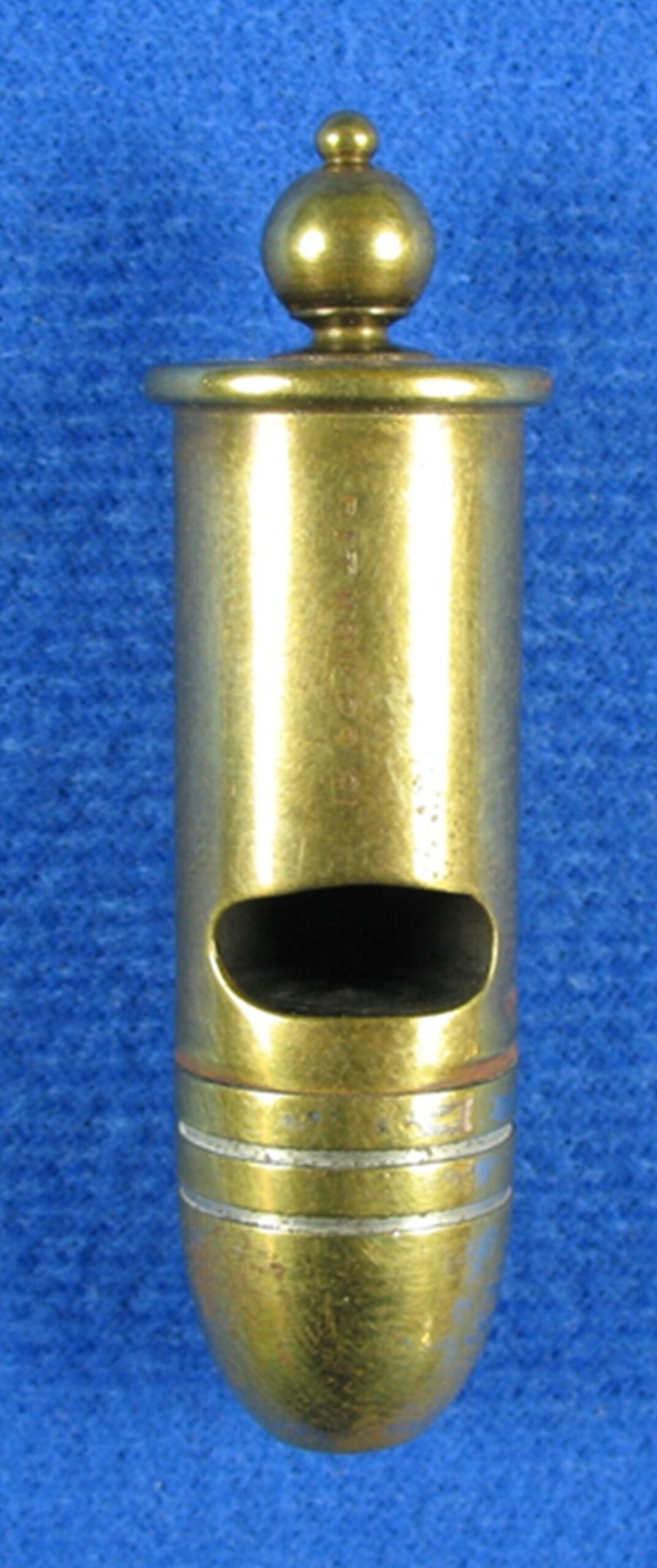
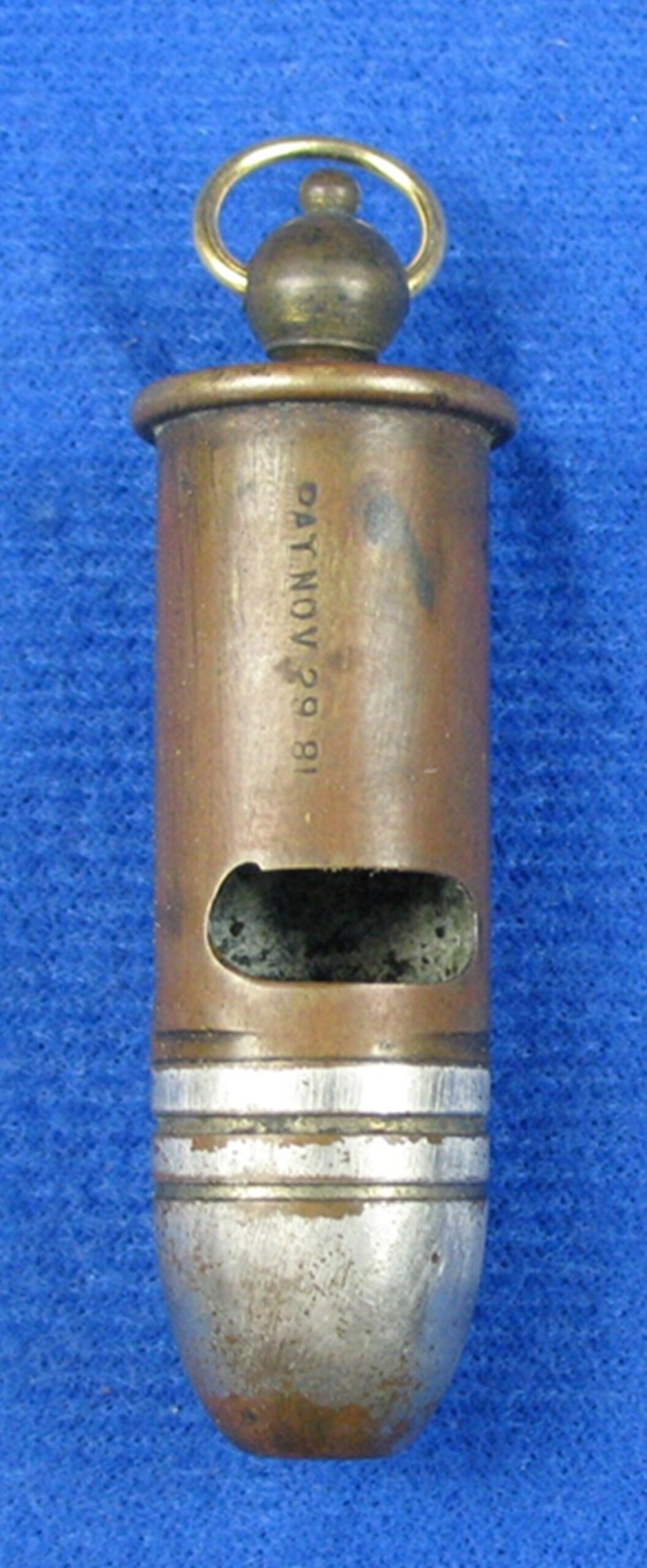
The following two pictures show where the stamp for BGI is displayed and the model number.
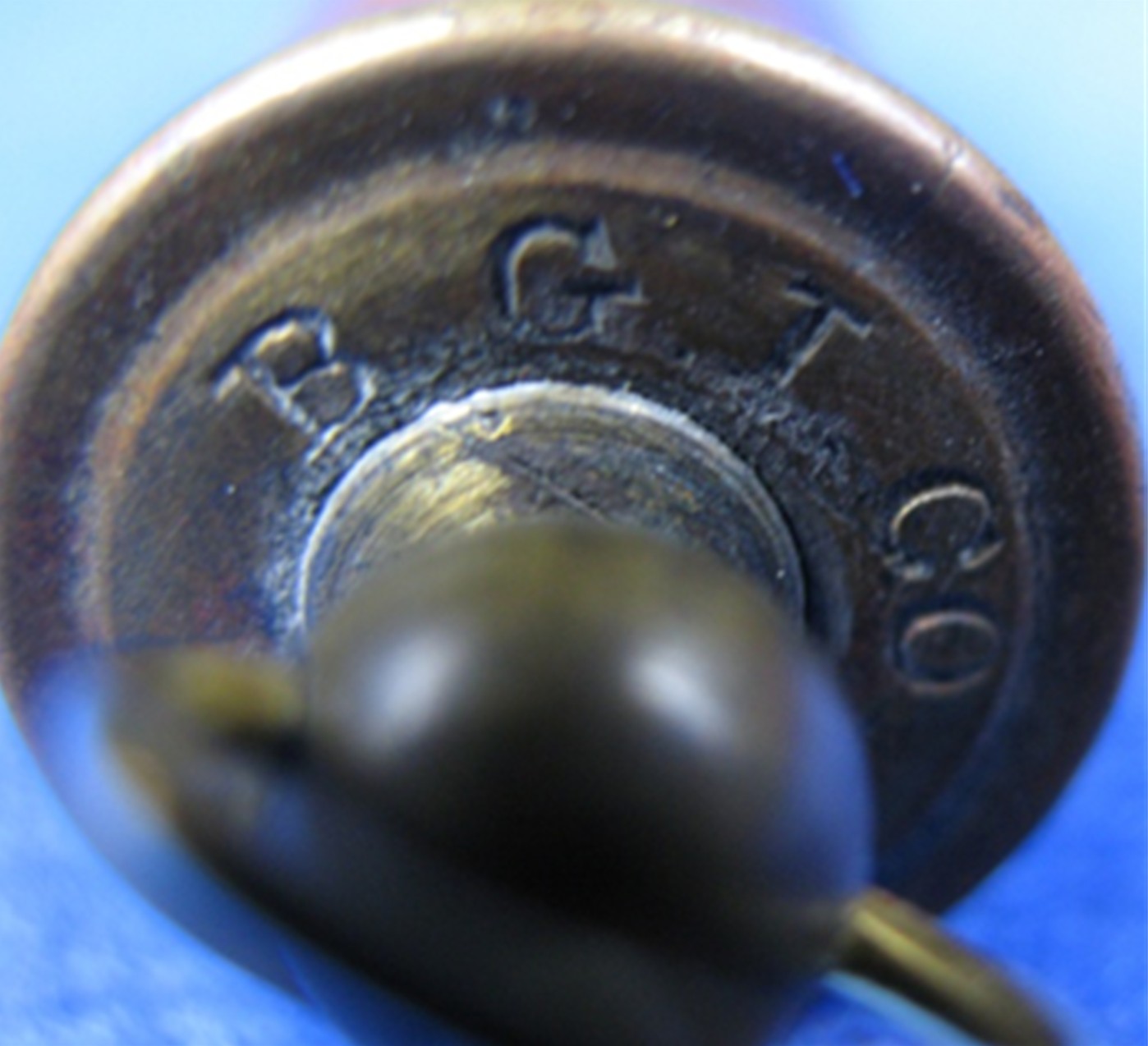

Next is the plain round knop that is seen more often — when found, this one was fitted with an aftermarket chain attached at some point of ownership. The knop is very small and the ring is original. There is no patent stamp on the front of this one.
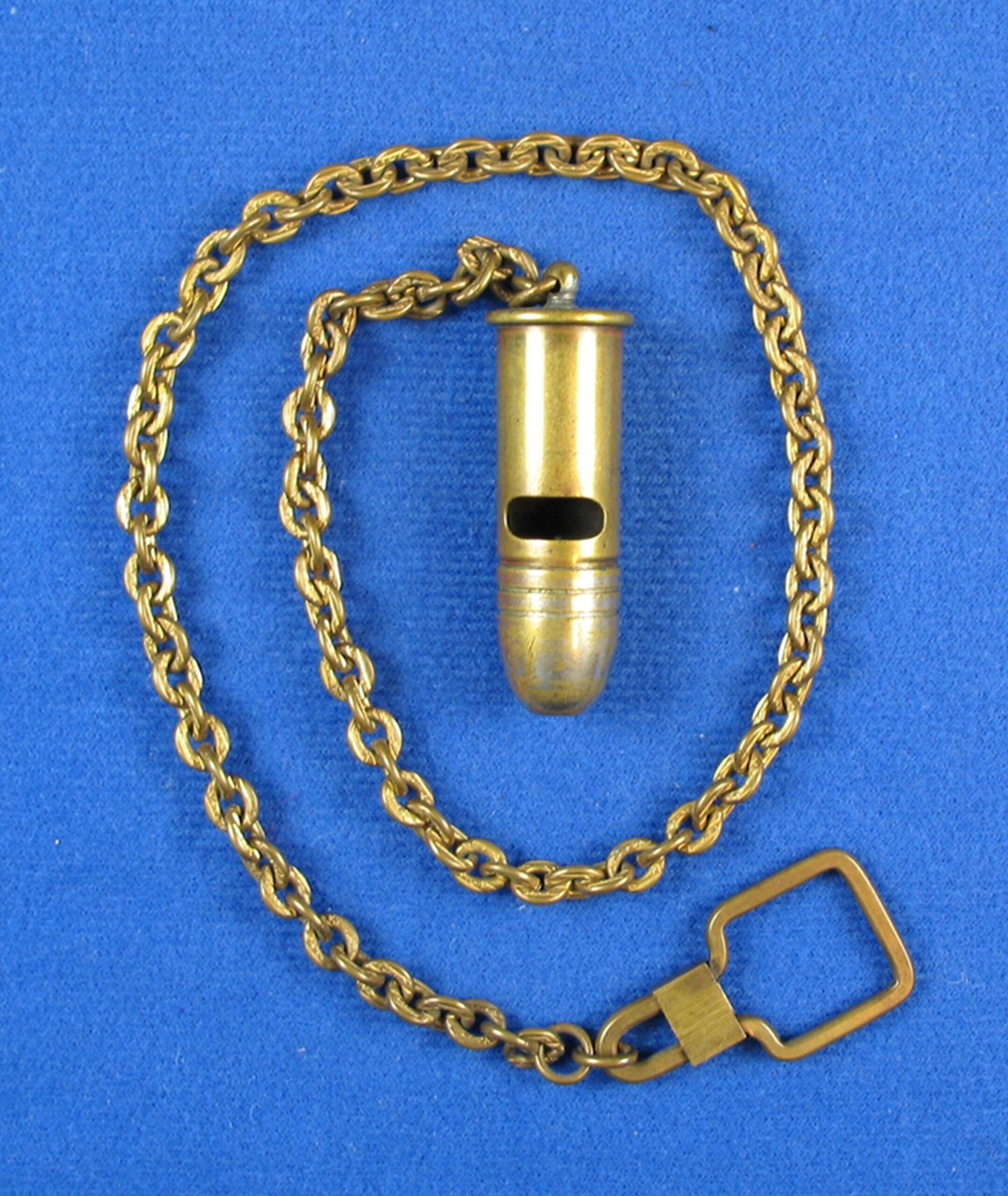
In the following picture we see the two different simple round knops, one smaller, one larger.
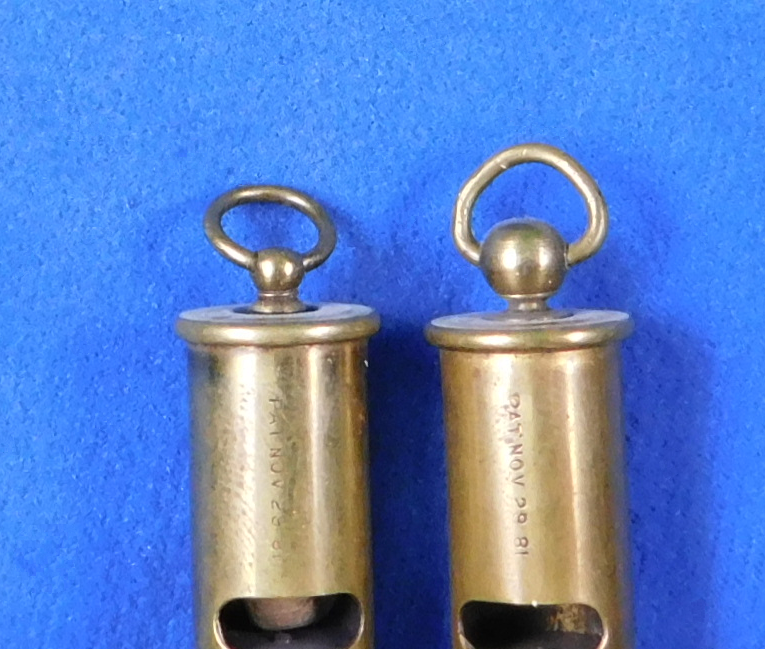
Conclusions
For almost twenty years the Bridgeport Gun Company produced a high-quality bullet shaped whistle. Two sizes were made, although only one size has been found. There may be variations not found yet. They are scarce but do come up for sale on occasion.
With the sale of the company to Union Hardware circa 1900, the 601 appears to have ceased from production, only stock being sold out of hand.
TWG
Posted March 13, 2013
Revised October 11, 2020
Revised February 12, 2021
Revised December 30, 2021
Revised January 30, 2022
Biblography:
BGI catalog 1886
Reference Collection Whistle Gallery
Google Patent Search









